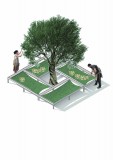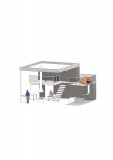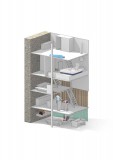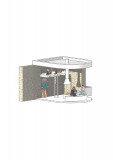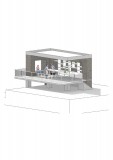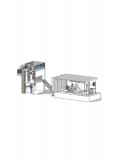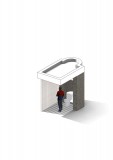Supervisor:
2018
The central axis of this project is the living experience of the landscape and the contact with nature as they are approached through agrotourism and geotourism. As a study area, the Peninsula of Mani is chosen due to the special features of its geomorphology. Through the reading of the area, both remotely and through field research, three types of landscape are defined; "wild", "domesticated" and "structured", corresponding to the natural, the cultivated and the architectural respectively.
The agrotouristic model which is chosen is that of the tourist routes on which some structures are placed. The program is structured around four main axes: harvest, production, cooking and accommodation. As far as the design is concerned, the factors that shaped the construction are tradition, landscape, weather and the needs that derive from the program. As a common language in all structures, there is a heavy structure / wall on which a light one is attached in an attempt to reduce the footprint of the intervention. As a result, the removal of the light structures becomes possible, leaving behind parts of the walls, reminiscent of the ruins of the Manian architecture often encountered during wandering in the landscape. Finally, the scale of the intervention ranges from the scale of cloth and furniture, as a harvest apron is designed, up to the scale of small structures and their location on three indicative plots corresponding to the three types of olive grove that have been identified.

